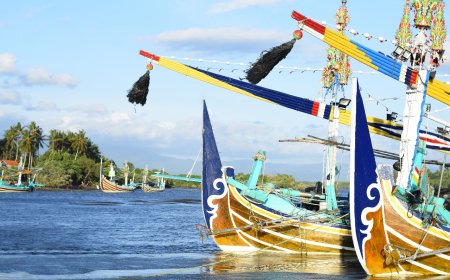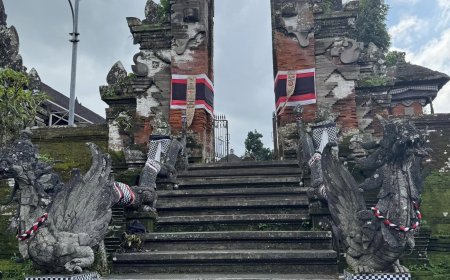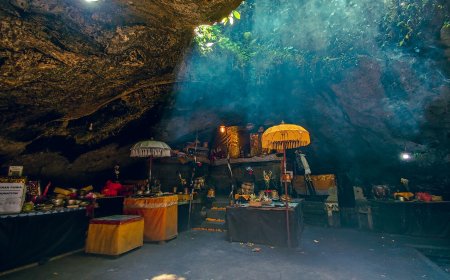Exploring the Historical Trails of Bukit Dharma Durga Kutri Temple in Bali
Bukit Dharma Durga Kutri Temple, standing since 835 caka in Bali, reveals a rich historical tapestry. Originating from the reign of King Sri Kesari Warmadewa, flourishing under Udayana in the 10th century, the temple signifies Bali's cultural and spiritual evolution. Supported by inscriptions like Peguyangan and Prangsada, it's evident that the temple played a pivotal role in the religious life of the community. The symbolic unity of Brahma, Vishnu, and Shiva is embodied in the statue of Durga Mahesamardini Astabuja. Bukit Dharma Durga Kutri Temple, with its Tri Mandala concept, reflects a harmonious blend of spirituality and architecture. The temple's enduring significance lies not only in its summit statue but also in the array of statues in the main courtyard, offering a captivating glimpse into Bali's majestic past.
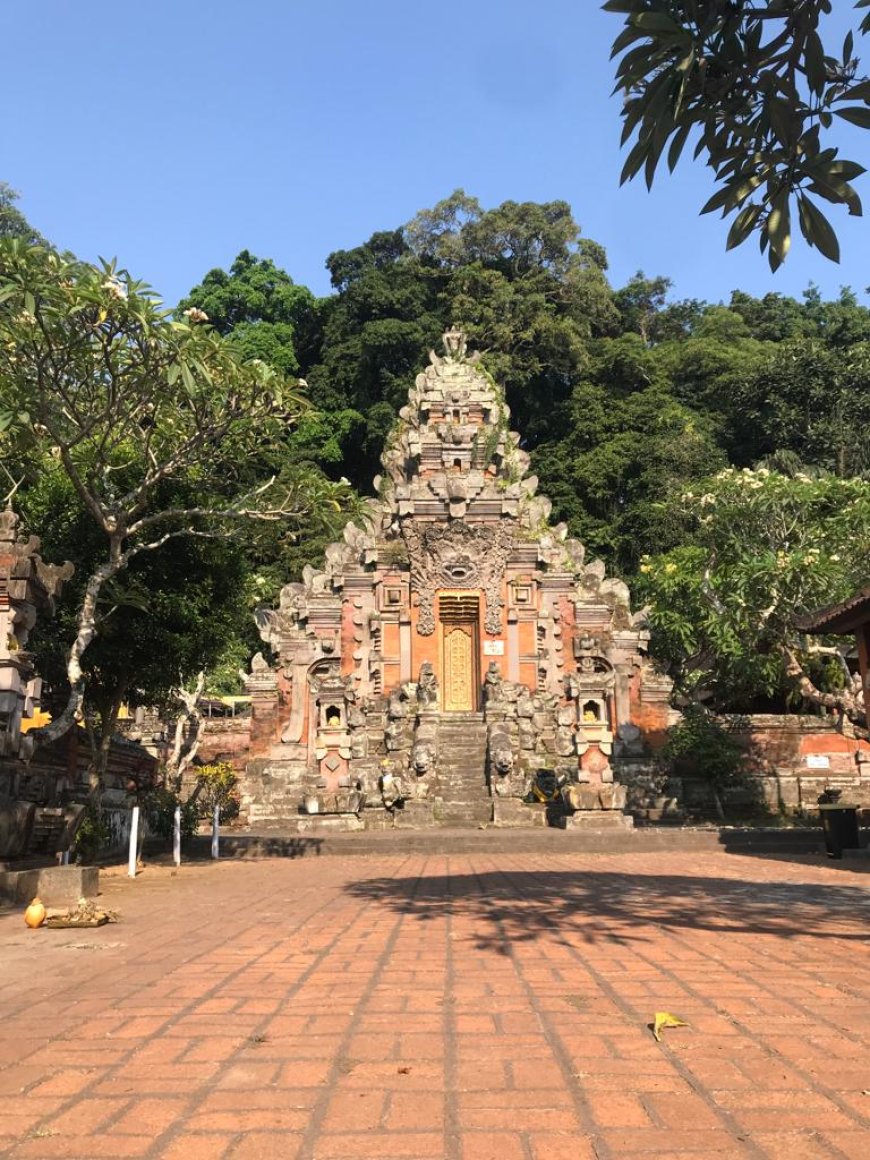
Bukit Dharma Durga Kutri Temple, believed to have stood since 835 caka according to inscriptions in Bali, stands as a silent witness to the island's captivating history. Located in Banjar Kutri, along the main road leading to Blahbatuh, Gianyar, this temple holds a unique charm with its hill and small forest enveloping the utama mandala.

Small Forest at Bukit Dharma Durga Kutri Temple (Source: Private Collection)
The origins of Bukit Dharma Durga Kutri Temple as a cosmic sanctuary can be traced back to the reign of King Sri Kesari Warmadewa, flourishing through the era of Udayana's glory in the 10th century AD. Udayana's reign, accompanied by Queen Gunapriya Dharmapatni, reached its pinnacle as the Bali kingdom expanded its territories to Timor Timur. Inscriptions like Peguyangan, Tengkulak, Trunyan, and Prangsada provide supporting evidence for the existence of this Temple.
The Prangsada inscription depicts Prabu Anak Wungsu's belief in his mother, Queen Mahendradatta Udayana, symbolically reunited with the Sun at Candi Burwan. The meaning conveyed suggests that the king and the people of that era were worshippers of the Sun (Vishnu), and Pura Bukit Dharma already stood during Queen Mahendradatta's rule.
The Peguyangan inscription reinforces the community's dedication to the deity worshipped at Buruan, forming the basis for living a national and religious life under the rule of Queen Mahendradatta Udayana. Living according to the principles of Bukit Dharma Durga Kutri Temple is believed to bring blessings.
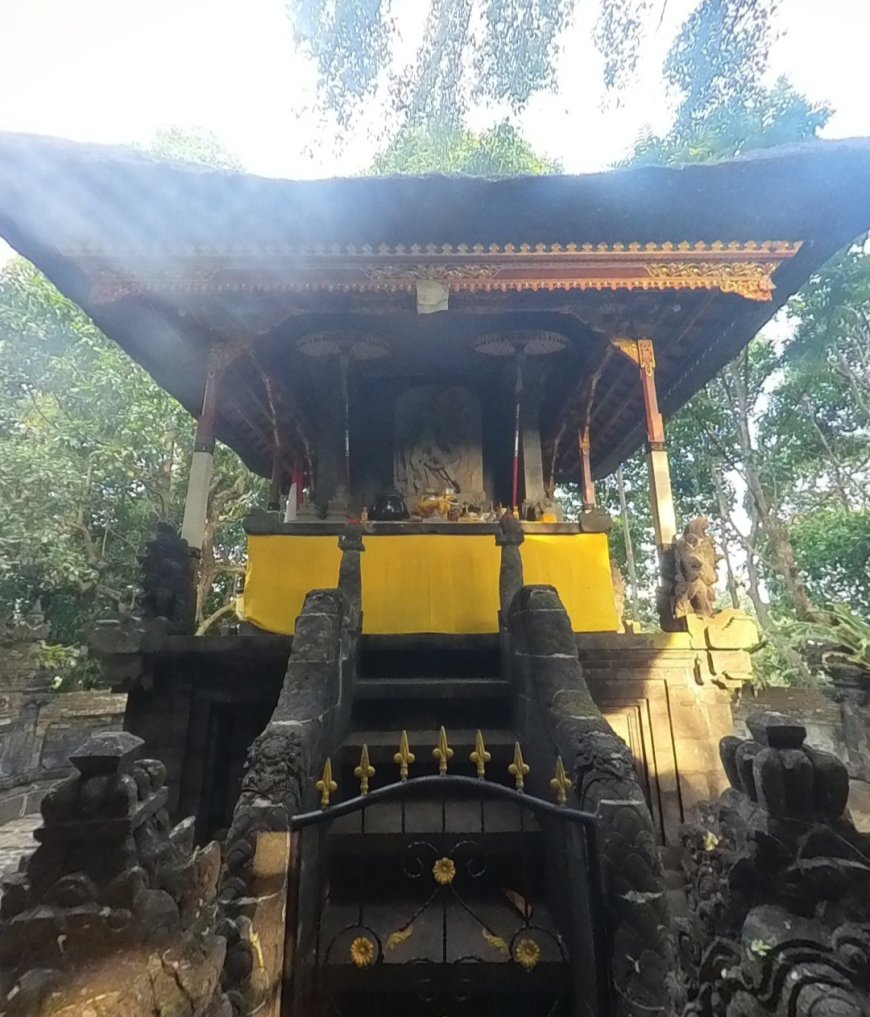
Statue of Durga Mahesamardini Astabuja (Source : Private Collection)
The statue of Durga Mahesamardini Astabuja, symbolizing Gayatri, embodies the unity of Brahma, Vishnu, and Shiva's forces. The concept of Tri Mandala and Tri Loka in the temple's arrangement reflects the harmony between Nista Mandala, Madya Mandala, and Utama Mandala.
Pura Bukit Dharma is not just a site for the statue of Durga Mahesamardini Astabuja at its summit but also showcases the beauty of Gedong Pesaren statues, Buddha statues, Shiva statues, Lingga Yoni statues, and Gedong Doho statues in its main courtyard, possibly related to the ancestors of Raja Sejoli. A comprehensive journey into the past that captivates and gives meaning to the existence of this temple until today.









